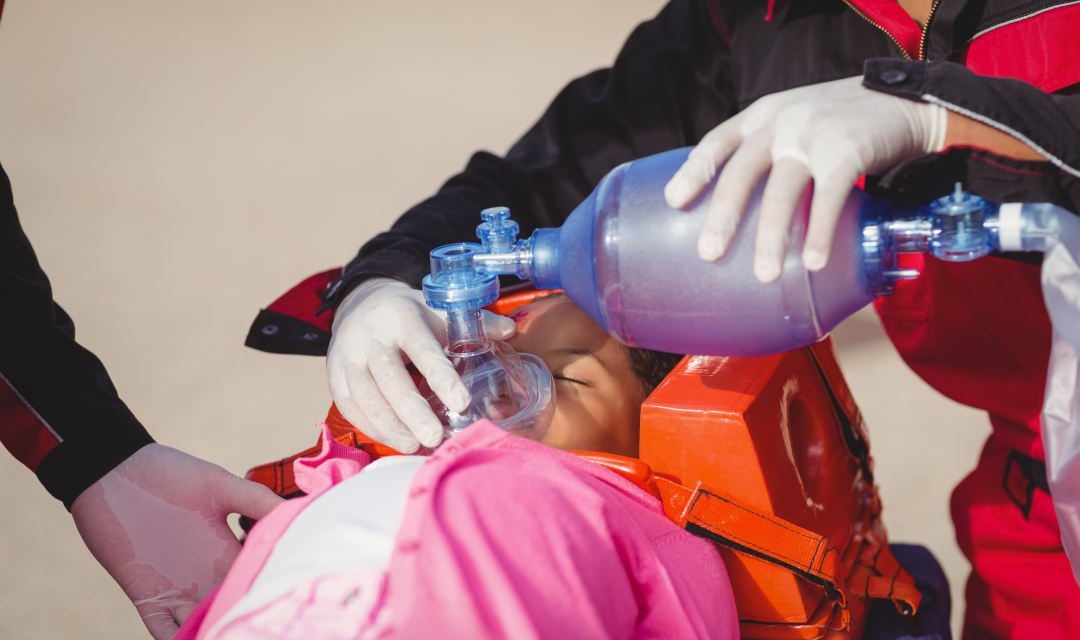Breathing assessment includes:
- Breathing rate
- Tidal volume
- Breathing effort (use of accessory respiratory muscles)
- Oxygenation
- Breathing efficiency (symmetry of chest lift)
Rapid breathing in children at rest can be caused by:
- Respiratory problems
- Lung problems
- -Problems with circulation
- Metabolic problems
Table of normal breathing rates by age:
CHILD’S AGE BREATHING RATE< 1 year 30-40/min. 1-2 years 25-35/min. 2-5 years 25-30/min. 5-11 years 20-25/min.
Tidal volume and, consequently, respiratory efficiency are assessed by observing chest rise and fall and bilateral chest auscultation. The chest rise should be symmetrical with normal breathing sounds. A tight chest is mostly a sign of a pre-terminal condition because it indicates insufficient air volume. During the examination, look for signs that the child is using accessory muscles and having difficulty breathing. This can be indicated by pulling in the chest and jugular, flaring of the nostrils, paradoxical breathing and the presence of wheezing during both inhalation and exhalation.
Sounds during inhalation (stridor) can indicate danger and possible problems caused by narrowing of the airways. A rattle indicates a narrowing of the lower airways and is usually heard during exhalation. Moaning may be heard during exhalation if the larynx is partially closed in an attempt to increase expiratory volume and preserve residual lung volume. This usually occurs in infants and young children and is a sign of severe stress.
Cyanosis of the mucous membranes in the mouth and nails, as well as pale skin, may be present in case of respiratory failure.
When assessing oxygen saturation, a pulse oximeter can be used in all age groups.
Children have unique breathing characteristics:
- Immature lungs at birth
- Changes in breathing mechanics with age
- In younger children, the ribs are soft and flexible, and the muscles are weak
- In younger children, the sternum and intercostal muscles may retract during respiratory failure
- In older children, the muscles are more developed, and the ribs ossify
Normal breathing requires minimal effort. The rate of breathing depends on the child’s excitement, anxiety and fever. The volume of spontaneous inhalation is constant (7-9 ml/kg of body weight). Minute ventilation is calculated by multiplying the tidal volume (the volume during inspiration) by the breathing rate.
Respiratory anxiety in children can be recognized by:
- Using auxiliary muscles
- Increased breathing rate
- Increased heart rate
Consequences of impaired breathing:
- Heart rate (tachycardia, later bradycardia due to hypoxia, pre-terminal sign)
- Skin color (red due to exertion, later pale due to hypoxia, cyanosis – pre-terminal sign)
- Brain (excited child/sleepy child, progressing to loss of consciousness, agitation may be harder to recognize – parents can help)
Management of respiratory disorders:
- Ensuring oxygenation by applying oxygen (the mask can be held by the parent)
- Auxiliary ventilation
Auxiliary ventilation:
- Breathing rate< 30 or> 50 in newborns
- – Breathing rate< 20 or> 30 in infants and children up to 13 years old
- Breathing rate< 12 or> 20 for children aged 13-16
- Improper expansion of the chest
Masks, self-developing bags and other auxiliary devices must be adapted to the age of the child.



0 Comments